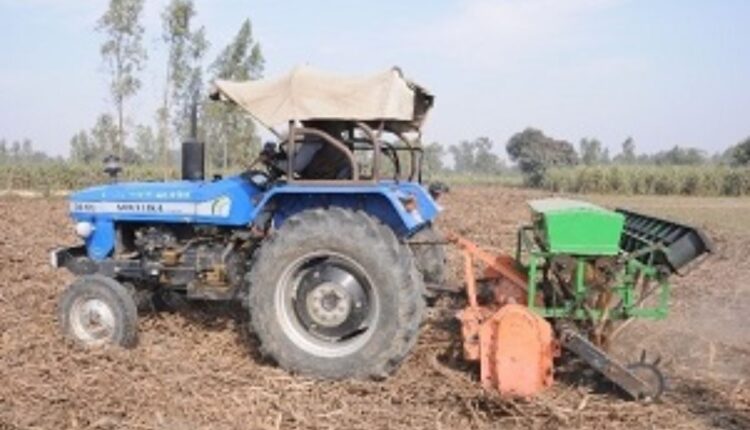Rotary Disc Drill: An efficient and powerful tool for post-harvest stubble and residue management
It is helpful in direct sowing of crops.
Rotary Disc Drill | Stubble management after harvesting is a major challenge. There are also reports of crop residue burning after harvesting crops such as paddy in northern India. Along with spoiling the nutrients and health of the soil, there is also a harmful effect on the environment. Apart from this, it also increases the problem of Climate Change / Global Warming.
To tackle the problem of stubble burning, ICAR-Indian Institute of Wheat and Barley Research (IIWBR), Karnal, developed Rotary Disc Drill (RDD) machine. This machine helps directly sow crops and reduces the farmers’ time, labor, and cost.

Innovative Technology
The Rotary Disc Drill (RDD) machine developed by ICAR is an innovative technology. This machine comes in the active type implement category, PTO operated. It has front mounted rotary cutting unit and a soil razor disc blade. Seeding attachments with double disc furrow openers are at the rear of the machine. This part works on a triple-disc mechanism.
The soil razor disc in the rotary cutting unit rotates at a speed of 380-400 rpm at standard PTO speed (540±10 rpm). The machine can be operated with a minimum 45 HP dual clutch tractor.

Effective in Direct Seeding
This machine effectively directly sows in paddy straw fields and sugarcane residue-covered fields. It also works on residual moisture, making it easy to use in the morning and evening. This does not happen in many other machines. The rotary disc drill machine has mechanisms for directly sowing crops like wheat, paddy, soybean, peas, barley, gram, pigeon pea, etc. It has a capacity of 0.4-0.5 liters per hectare and a specific fuel consumption of 12-15 liters per hectare, depending on soil condition and residue load.
Direct wheat seeding in paddy straw fields produces less carbon dioxide (CO2) emissions than the conventional tillage method. Also, there can be a saving of Rs 4200 per hectare.

Demonstration in Haryana and Uttar Pradesh
During 2020-2021, Rotary Disc Drill Machine was demonstrated in farmers’ field at Karnal in Haryana and Shamli district of Uttar Pradesh. Under this, wheat was sown in rice-wheat and sugarcane-wheat crop rotation. Direct seeding of wheat under stubble with rotary disc drill machine has shown reduction in fuel cost by 60-65% as compared to conventional cultivation. At the same time, the crop was obtained equal to or more than the conventional sowing.
Additional Benefits
This technology is very useful for farmers engaged in rice-wheat and sugarcane-wheat crop rotation. It also helps the farmers to get additional crop by direct sowing of wheat or other pulse crops like mungbean in the sugarcane residue fields. This also increases the profit of the farmers. Direct seeding results in faster sowing of the crop and helps in increasing the area under wheat. Soil nutrients are also maintained by using this machine, farmers do not have to burn stubble and the environment is also protected.
Also Read: Biochar: Domestic and Scientific method of making soil fertile, know why its Unique
Contact us – If farmers want to share any valuable information or experiences related to farming, they can connect with us via phone or WhatsApp at 9599273766 or you can write to us at “[email protected]”. Through Kisan of India, we will convey your message to the people, because we believe that if the farmers are advanced then the country is happy.
You can connect with Kisan of India on Facebook, Twitter, and WhatsApp and Subscribe to our YouTube channel.



